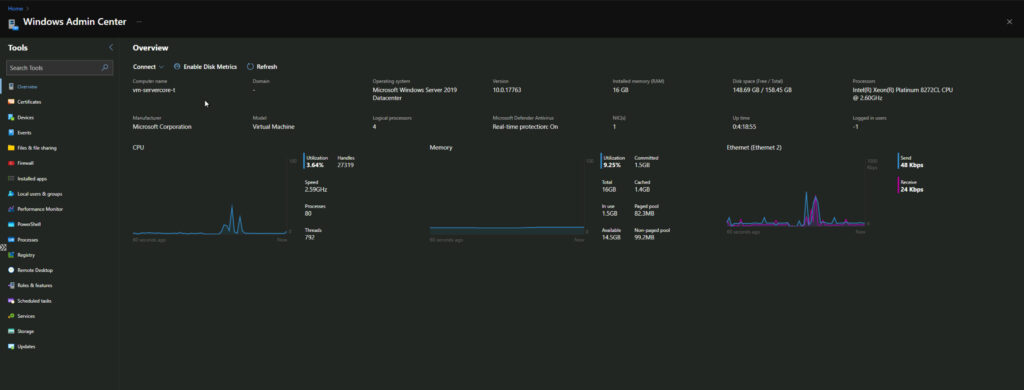Technical Blog
Windows Admin Center and Server Core
Combine Windows Admin Center with Server Core to maximise usability
Windows Admin Center, first released in 2018, is a browser-based management platform and solution, providing tools for the management, configuration, troubleshooting and maintenance of Windows operating systems. Preview Version 2 of an Azure-native deployment of Windows Admin Center has been available since March 2021, offering consumers of Azure Windows VMs the opportunity to use these same tools directly from the Azure Portal. Where these features really shine is in the management of Windows Server Core, a GUI-less Windows Server deployment.
Windows Server Core – A Quick Introduction
Windows Server Core is a lightweight installation option for Windows Server that eliminates services and other features not required for commonly used server roles. The smaller code base presents a much smaller attack surface compared to the typical Windows Server install, making it perfect for server roles that don’t require a graphical user interface (GUI) or are already intended to be managed remotely (e.g. Hyper-V). However, the lack of a GUI can present a challenge for users that are less comfortable managing and configuring Windows Server using the command line or Powershell.
Windows Admin Center
Windows Admin Center (WAC) provides some of those GUI elements directly via the Azure Portal, enabling the user to manage and configure their Server Core instance without the need for command line or Powershell knowledge. From the overview, you’re presented with some key server information (hostname, Windows edition, domain etc.) as well as utilisation statistics.
From the menu on the left hand side you’re able to navigate through the different functions of the Admin Center – anyone who has used the locally-installed version of WAC will feel at home, as functionally and visually it is very similar to the on-premises version.
For example, you’re able to view the Processes currently running on the server and perform the same actions you’d expect to be able to carry out through the GUI Task Manager, such as starting and ending processes; you’re also able to view resource metrics and related Services by selecting a specific process and navigating the tabbed panel at the bottom of the window.


